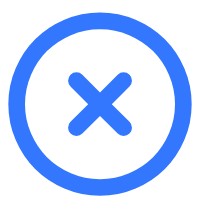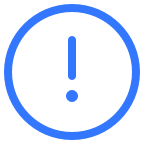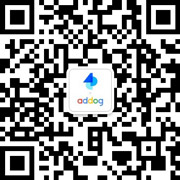本案例默认翻译为中文,点击可切换回原语言
已切换成原语言,点击可翻译成中文
安全轮毂
案例简介:为什么这项工作与创意数据相关? 利用超过90年的NRMA保险专业知识,最近的索赔,地理和天气数据-有内部洪水风险的老化房屋以及房屋火灾,我们确定了156,000风险保险客户。 我们绕过了付费媒体,选择了共享的经济结果模式,并在灾难发生之前而不是为时已晚的时候向我们的客户付费以降低他们的风险。 通过游戏化保险和引入即时奖励机制,我们能够监控客户的行为,并触发量身定制的通信旅程,在整个体验过程中奖励客户,因为他们在家里完成了安全任务。 背景 保险公司赚钱基于两个关键因素: 他们的会员基数有多大,以及只有一小部分客户要求索赔的希望。 每年有10% 人提出索赔,而另90% 人每年只体验一次该品牌 (当他们续签并支付保单时),结果对双方都不好。 我们的简报是减少支付的总索赔额。同时也让更多的客户体验到我们的服务。 解决方案隐藏在我们的索赔数据中。 凭借90年的经验和索赔数据,我们发现澳大利亚的大多数索赔实际上是可以避免的。出于对这不仅会影响我们的业务,还会让澳大利亚人的生活更安全的好奇,我们将创意团队、风险分析师、行为专家、数据科学家和开发人员组合在一起,重新设计这一类别 -- 将其从主动转变为被动。 描述想法/数据解决方案 (投票20%) Safety Hub不仅仅是一个应用程序。我们重新设计了整个保险类别,改变了人们对保险的体验。 它从消除内墙开始-将营销,产品,数据,索赔,风险分析师和客户服务等不同部门聚集在一起,以改变品牌的运作方式。 凭借90年的经验和索赔数据,我们发现澳大利亚家庭面临的一些最大风险是可以预防的。就像取代澳大利亚造成洪水的主要原因 -- 一根8美元的弹性软管。或者清理风暴地区的排水沟。基础知识。 然后,我们使用通常在灾难发生后保留用于支付人们的索赔金,以帮助人们更安全。完全避免灾难。 Safety Hub的推出是为了156,000高风险的澳大利亚人,为每个参与者提供量身定制的通信旅程。从电影到实时通知,再到旨在确保其安全的个性化安全任务。每次任务完成后,我们都会直接将钱存入他们的银行帐户。 描述数据驱动策略 (投票30%) 首先,我们根据他们的位置和风险倾向确定NRMA的最高风险客户。 根据他们最有可能面对的灾难,将这些观众分为几组。然后,他们得到钱来完成任务,以确保他们的安全。 向丛林大火地区的37% 客户支付了清理排水沟并从花园中清除树叶的费用。 在易受风暴影响的地区,43% 的顾客获得了修剪树木和保护户外物品的报酬。 要求21% 居住在旧电线老化房屋中的客户检查电源板,并检查烟雾报警器等关键电器是否有磨损迹象。 然后,这些客户被邀请使用Safety Hub,而不是在灾难发生后等待体验NRMA,他们体验了帮助他们避免灾难的保险。 描述数据的创造性使用,或数据如何增强创造性输出 (投票30%) 移动应用程序最初是作为工作原型构建的,2018年7月邀请了2,000名高风险客户加入。这为我们提供了必要的见解,以证明如果保险为客户提供个性化和相关的安全建议,他们将参与保险。 结合多个数据源-超过90年的NRMA保险专业知识,最近的索赔,地理和天气-我们确定了澳大利亚的高风险客户。重点关注风暴和飓风地区,面临灾难性内部洪水风险的老化房屋以及房屋火灾,我们确定了156,000名有风险的客户,他们被邀请下载Safety Hub应用程序。 我们向他们支付现金,以完成一系列个性化的 “安全任务”。任务包括: 20美元,用于更换容易损坏和淹没房屋的柔性软管。清理在丛林大火季节的暴风雨或火灾中增加水灾风险的排水沟。如果客户发现flexi软管有问题,这是澳大利亚洪水的主要原因,我们甚至付钱给商人安全地修复它们,价值高达400澳元。 通过Adobe Campaign记录和分析客户行为,并为每个客户触发下一个最佳操作,无论是完成和未完成的任务,还是完成下一个安全任务。 列出数据驱动的结果 (投票20%) 16,964安全任务已派出近30% 人已完成。 数十万美元的潜在索赔已被阻止。 最重要的是,许多澳大利亚家庭现在更安全。 与安全中心的互动是现有NRMA应用程序的两倍,并获得了前所未有的客户满意度。 ·79% 的客户将NRMA保险视为更积极主动的保险公司 ·68% 觉得更有价值。 ·82% 准备从意外事件中恢复过来。 评论: ·“优秀的主动性,为我提供了宝贵的知识,防止未来的问题在我的家: “我从没想过要检查水槽下面的管道。绝妙的主意” “通过我们开发的战略和概念,以及我们通过Adobe体验执行的行为针对性的技术智慧,Safety Hub不仅改变了我们与客户的关系,还在全国范围内实现了更安全的生活。” Brent Smart,CMO IAG
安全轮毂
案例简介:Why is this work relevant for Creative Data? Using over 90 years of NRMA Insurance expertise, recent claims, geographical and weather data – aging homes at risk of internal flooding, and house fires we identified 156,000 at risk insurance customers. We bypassed paid media opting for a shared economic outcome model and paid our customers to reduce their risk before the disaster instead of after when it was too late. By gamifying insurance and introducing immediate reward mechanisms we were able to monitor customer behavior and trigger a tailored comms journey rewarding customers throughout the experience as they completed safety tasks around their home. Background Insurance companies make money based on two key things: How large their member base is, and the hope that only a small percentage of those customers claim. With 10% of people making claims each year, and the other 90% only experiencing the brand once a year (when they renew and pay their policy) the results weren’t good on either side. Our brief was to reduce the total claims paid out. While also allowing more customers to experience our service. The solution lay hidden in our claims data. With 90 years of experience and claims data, we found that the majority of claims in Australia were actually avoidable. Curious about how this could not only impact our business, but also make the lives of Australians safer, we combined creative teams, risk analysts, behavioural specialists, data scientists and developers to redesign the category - shifting it from proactive to reactive. Describe the idea/data solution (20% of vote) Safety Hub was not just an app. We redesigned the entire insurance category, changing how people experience insurance. It started by removing the internal walls - bringing together different departments from marketing, product, data, claims, risk analysts and customer services to change the way the brand operates. With 90 years of experience and claims data, we found some of the greatest risks to Australian homes were preventable. Like replacing Australia’s leading cause of flooding – an $8 flexi-hose. Or clearing gutters in storm areas. The basics. We then used claims money usually reserved to pay people after the disaster to help people be safer. And avoid disasters completely. Safety Hub was launched to 156,000 high-risk Australians with tailored comms journeys for each participant. From films, to real-time notifications, to personalised safety tasks designed to keep them safe. Each time a task was completed, we paid money straight into their bank account. Describe the data driven strategy (30% of vote) First, we identified NRMA’s highest risk customers based on their location and risk propensity. This audience was segmented into groups, based on the disaster they were most likely to face. They were then paid money to complete tasks to keep them safe. 37% of customers in bushfire areas were paid to clear out their gutters and remove foliage from their gardens. 43% of customers in storm prone areas were paid to trim their trees and secure outdoor items. 21% of customers living in aging homes with old electrical wiring were asked to do check power boards, and check key electrical appliances like smoke alarms for signs of wear. These customers were then invited to use Safety Hub, and instead of waiting to experience NRMA after a disaster, they experienced insurance to help them avoid a disaster. Describe the creative use of data, or how the data enhanced the creative output (30% of vote) The mobile application was initially built as a working prototype with 2,000 high-risk customers invited to join in July 2018. This gave us insights necessary to prove customers will engage with insurance if it provides them with personalised and relevant safety advice. Combining multiple data sources - over 90 years of NRMA Insurance expertise, recent claims, geographical and weather – we identified high risk customers across Australia. Focusing on storm and cyclone areas, aging homes at risk of catastrophic internal flooding, and house fires we identified 156,000 at risk customers who were invited to download the Safety Hub app. We paid them in cash to complete a series of personalised ‘Safety tasks’. Tasks included: $20 for replacing flexible hoses susceptible to busting and flooding homes. Clearing out gutters which increase the risk of water damage during storms or fires during bushfire season. If customers spotted a problem with a flexi hose, Australia’s leading cause of flooding, we even paid tradespeople to fix them safely valued up to $400. Customers behaviour was logged and analysed through Adobe Campaign and triggered the next best action for each customer, whether that was completing and unfinished task or completing their next safety task. List the data driven results (20% of vote) 16,964 safety tasks have been sent out with nearly 30% been completed. Hundreds of thousands of dollars of potential claims have been prevented. Most importantly, many Australian homes are now safer. Engagement with Safety Hub was double that of existing NRMA app and received unprecedented levels of customer satisfaction. · 79% of customers see NRMA Insurance as a more proactive insurer. · 68% feel more valued. · 82% Feel prepared to recover from an unexpected event. Comments: · “Excellent initiative, provided me with valuable knowledge on preventing future issues in my home: · “I never thought to check pipes under the sink. Brilliant idea” “Through the strategy and concept that we developed, to the behaviourally-targeted, technical smarts that we executed through the Adobe Experience Could, Safety Hub is not just changing the relationship we have with our customers, it’s enabling safer living across the country.” Brent Smart, CMO IAG
Safety Hub
案例简介:为什么这项工作与创意数据相关? 利用超过90年的NRMA保险专业知识,最近的索赔,地理和天气数据-有内部洪水风险的老化房屋以及房屋火灾,我们确定了156,000风险保险客户。 我们绕过了付费媒体,选择了共享的经济结果模式,并在灾难发生之前而不是为时已晚的时候向我们的客户付费以降低他们的风险。 通过游戏化保险和引入即时奖励机制,我们能够监控客户的行为,并触发量身定制的通信旅程,在整个体验过程中奖励客户,因为他们在家里完成了安全任务。 背景 保险公司赚钱基于两个关键因素: 他们的会员基数有多大,以及只有一小部分客户要求索赔的希望。 每年有10% 人提出索赔,而另90% 人每年只体验一次该品牌 (当他们续签并支付保单时),结果对双方都不好。 我们的简报是减少支付的总索赔额。同时也让更多的客户体验到我们的服务。 解决方案隐藏在我们的索赔数据中。 凭借90年的经验和索赔数据,我们发现澳大利亚的大多数索赔实际上是可以避免的。出于对这不仅会影响我们的业务,还会让澳大利亚人的生活更安全的好奇,我们将创意团队、风险分析师、行为专家、数据科学家和开发人员组合在一起,重新设计这一类别 -- 将其从主动转变为被动。 描述想法/数据解决方案 (投票20%) Safety Hub不仅仅是一个应用程序。我们重新设计了整个保险类别,改变了人们对保险的体验。 它从消除内墙开始-将营销,产品,数据,索赔,风险分析师和客户服务等不同部门聚集在一起,以改变品牌的运作方式。 凭借90年的经验和索赔数据,我们发现澳大利亚家庭面临的一些最大风险是可以预防的。就像取代澳大利亚造成洪水的主要原因 -- 一根8美元的弹性软管。或者清理风暴地区的排水沟。基础知识。 然后,我们使用通常在灾难发生后保留用于支付人们的索赔金,以帮助人们更安全。完全避免灾难。 Safety Hub的推出是为了156,000高风险的澳大利亚人,为每个参与者提供量身定制的通信旅程。从电影到实时通知,再到旨在确保其安全的个性化安全任务。每次任务完成后,我们都会直接将钱存入他们的银行帐户。 描述数据驱动策略 (投票30%) 首先,我们根据他们的位置和风险倾向确定NRMA的最高风险客户。 根据他们最有可能面对的灾难,将这些观众分为几组。然后,他们得到钱来完成任务,以确保他们的安全。 向丛林大火地区的37% 客户支付了清理排水沟并从花园中清除树叶的费用。 在易受风暴影响的地区,43% 的顾客获得了修剪树木和保护户外物品的报酬。 要求21% 居住在旧电线老化房屋中的客户检查电源板,并检查烟雾报警器等关键电器是否有磨损迹象。 然后,这些客户被邀请使用Safety Hub,而不是在灾难发生后等待体验NRMA,他们体验了帮助他们避免灾难的保险。 描述数据的创造性使用,或数据如何增强创造性输出 (投票30%) 移动应用程序最初是作为工作原型构建的,2018年7月邀请了2,000名高风险客户加入。这为我们提供了必要的见解,以证明如果保险为客户提供个性化和相关的安全建议,他们将参与保险。 结合多个数据源-超过90年的NRMA保险专业知识,最近的索赔,地理和天气-我们确定了澳大利亚的高风险客户。重点关注风暴和飓风地区,面临灾难性内部洪水风险的老化房屋以及房屋火灾,我们确定了156,000名有风险的客户,他们被邀请下载Safety Hub应用程序。 我们向他们支付现金,以完成一系列个性化的 “安全任务”。任务包括: 20美元,用于更换容易损坏和淹没房屋的柔性软管。清理在丛林大火季节的暴风雨或火灾中增加水灾风险的排水沟。如果客户发现flexi软管有问题,这是澳大利亚洪水的主要原因,我们甚至付钱给商人安全地修复它们,价值高达400澳元。 通过Adobe Campaign记录和分析客户行为,并为每个客户触发下一个最佳操作,无论是完成和未完成的任务,还是完成下一个安全任务。 列出数据驱动的结果 (投票20%) 16,964安全任务已派出近30% 人已完成。 数十万美元的潜在索赔已被阻止。 最重要的是,许多澳大利亚家庭现在更安全。 与安全中心的互动是现有NRMA应用程序的两倍,并获得了前所未有的客户满意度。 ·79% 的客户将NRMA保险视为更积极主动的保险公司 ·68% 觉得更有价值。 ·82% 准备从意外事件中恢复过来。 评论: ·“优秀的主动性,为我提供了宝贵的知识,防止未来的问题在我的家: “我从没想过要检查水槽下面的管道。绝妙的主意” “通过我们开发的战略和概念,以及我们通过Adobe体验执行的行为针对性的技术智慧,Safety Hub不仅改变了我们与客户的关系,还在全国范围内实现了更安全的生活。” Brent Smart,CMO IAG
Safety Hub
案例简介:Why is this work relevant for Creative Data? Using over 90 years of NRMA Insurance expertise, recent claims, geographical and weather data – aging homes at risk of internal flooding, and house fires we identified 156,000 at risk insurance customers. We bypassed paid media opting for a shared economic outcome model and paid our customers to reduce their risk before the disaster instead of after when it was too late. By gamifying insurance and introducing immediate reward mechanisms we were able to monitor customer behavior and trigger a tailored comms journey rewarding customers throughout the experience as they completed safety tasks around their home. Background Insurance companies make money based on two key things: How large their member base is, and the hope that only a small percentage of those customers claim. With 10% of people making claims each year, and the other 90% only experiencing the brand once a year (when they renew and pay their policy) the results weren’t good on either side. Our brief was to reduce the total claims paid out. While also allowing more customers to experience our service. The solution lay hidden in our claims data. With 90 years of experience and claims data, we found that the majority of claims in Australia were actually avoidable. Curious about how this could not only impact our business, but also make the lives of Australians safer, we combined creative teams, risk analysts, behavioural specialists, data scientists and developers to redesign the category - shifting it from proactive to reactive. Describe the idea/data solution (20% of vote) Safety Hub was not just an app. We redesigned the entire insurance category, changing how people experience insurance. It started by removing the internal walls - bringing together different departments from marketing, product, data, claims, risk analysts and customer services to change the way the brand operates. With 90 years of experience and claims data, we found some of the greatest risks to Australian homes were preventable. Like replacing Australia’s leading cause of flooding – an $8 flexi-hose. Or clearing gutters in storm areas. The basics. We then used claims money usually reserved to pay people after the disaster to help people be safer. And avoid disasters completely. Safety Hub was launched to 156,000 high-risk Australians with tailored comms journeys for each participant. From films, to real-time notifications, to personalised safety tasks designed to keep them safe. Each time a task was completed, we paid money straight into their bank account. Describe the data driven strategy (30% of vote) First, we identified NRMA’s highest risk customers based on their location and risk propensity. This audience was segmented into groups, based on the disaster they were most likely to face. They were then paid money to complete tasks to keep them safe. 37% of customers in bushfire areas were paid to clear out their gutters and remove foliage from their gardens. 43% of customers in storm prone areas were paid to trim their trees and secure outdoor items. 21% of customers living in aging homes with old electrical wiring were asked to do check power boards, and check key electrical appliances like smoke alarms for signs of wear. These customers were then invited to use Safety Hub, and instead of waiting to experience NRMA after a disaster, they experienced insurance to help them avoid a disaster. Describe the creative use of data, or how the data enhanced the creative output (30% of vote) The mobile application was initially built as a working prototype with 2,000 high-risk customers invited to join in July 2018. This gave us insights necessary to prove customers will engage with insurance if it provides them with personalised and relevant safety advice. Combining multiple data sources - over 90 years of NRMA Insurance expertise, recent claims, geographical and weather – we identified high risk customers across Australia. Focusing on storm and cyclone areas, aging homes at risk of catastrophic internal flooding, and house fires we identified 156,000 at risk customers who were invited to download the Safety Hub app. We paid them in cash to complete a series of personalised ‘Safety tasks’. Tasks included: $20 for replacing flexible hoses susceptible to busting and flooding homes. Clearing out gutters which increase the risk of water damage during storms or fires during bushfire season. If customers spotted a problem with a flexi hose, Australia’s leading cause of flooding, we even paid tradespeople to fix them safely valued up to $400. Customers behaviour was logged and analysed through Adobe Campaign and triggered the next best action for each customer, whether that was completing and unfinished task or completing their next safety task. List the data driven results (20% of vote) 16,964 safety tasks have been sent out with nearly 30% been completed. Hundreds of thousands of dollars of potential claims have been prevented. Most importantly, many Australian homes are now safer. Engagement with Safety Hub was double that of existing NRMA app and received unprecedented levels of customer satisfaction. · 79% of customers see NRMA Insurance as a more proactive insurer. · 68% feel more valued. · 82% Feel prepared to recover from an unexpected event. Comments: · “Excellent initiative, provided me with valuable knowledge on preventing future issues in my home: · “I never thought to check pipes under the sink. Brilliant idea” “Through the strategy and concept that we developed, to the behaviourally-targeted, technical smarts that we executed through the Adobe Experience Could, Safety Hub is not just changing the relationship we have with our customers, it’s enabling safer living across the country.” Brent Smart, CMO IAG
安全轮毂
暂无简介
Safety Hub
暂无简介
基本信息
- 广告战役: #NRMA-网络-7a26#
- 广告品牌: NRMA
- 发布日期: 2000
- 行业领域: 商务服务
- 媒体类别: 海报/平面
- 广告语言: 英语
- 媒介平台: 网络
-
获得奖项:
- Cannes Lions 2019 银奖 创意数据(Data-driven Consumer Product)
- Cannes Lions 2019 银奖 移动应用(Brand-led Mobile Apps)
- Cannes Lions 2019 铜奖 创意策略(Business Transformation)
- Cannes Lions 2019 铜奖 移动应用(Data / Insight)
- Cannes Lions 2019 入围 品牌体验与激活(Data-enhanced Creativity)
- Cannes Lions 2019 入围 创意策略(Data & Analytics)
- Cannes Lions 2019 入围 创意策略(Audience Insight)
暂无评分
已有{{caseInfo.tatolPeople}}人评分
创作者
案例详情
涵盖全球100万精选案例,涉及2800个行业,包含63000个品牌
热门节日97个,23个维度智能搜索
-

项目比稿
品类案例按时间展现,借鉴同品牌策略,比稿提案轻松中标
-

创意策划
任意搜索品牌关键词,脑洞创意策划1秒呈现
-

竞品调研
一键搜索竞品往年广告,一眼掌握对手市场定位
-

行业研究
热词查看洞悉爆点,抢占行业趋势红利
登录后查看全部案例信息
如果您是本案的创作者或参与者 可对信息进行完善







